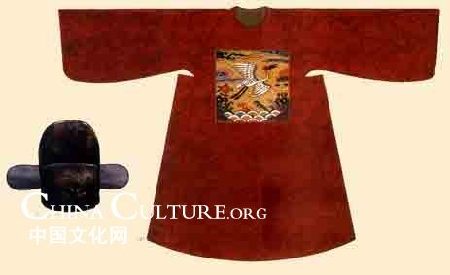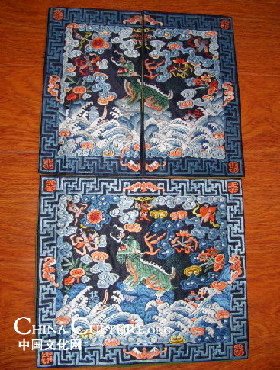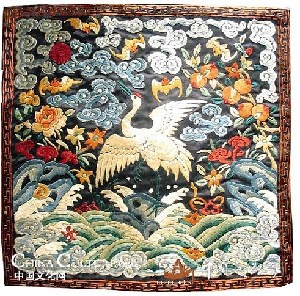Specials
The rank patches of the Ming and Qing dynasties
Updated: 2009-02-16 15:10
By Feng Hui (chinaculture.org)
Costumes of ancient officials are a reflection of ancient China’s feudal hierarchy. In Ming and Qing dynasties (1368-1911), court officials’ costumes were adorned with rank patches, largely square patterns embroidered with colored threads on the front and back to unveil their civilian or military ranks. Generally, patterns for the civil officials were birds to symbolize their virtues, while those for military officers were beasts to show their power.
|
|
Rank patches were said to take rise under the reign of Empress Wuzetian in the Tang Dynasty. The empress awarded some officials with gorgeous gowns embroidered with flowers. Other officials followed suit to decorate their gowns with the style.Since then, rank patches became popular among court officials.
Patches were also found in the tombs of Yuan Dynasty (1271-1368). However they were mere adornment on clothes,having nothing to do with official ranks.
Rank patches were formally used to show official ranks in the Ming Dynasty (1368-1644). According to the historical records, the Emperor Zhu Yuanzhang (1368-1398) set a rule in 1391 that officials’ costumes should be loose gowns of round collars, with square rank patches sewn on the front and back. Rank patches were woven in such ways as brocading, embroidering and Kesi weaving. Thanks to excellent handicrafts, rank patches for civil officials were usually embroidered with twin flying birds and those for the military officers, a single beast.
|
|
Rank patches of the Ming Dynasty were integrally sewed on gowns. Most were in plain colors, embroidered with different patterns of golden threads against a red background. Different from the Ming period, most rank patches of the Qing Dynasty (1644-1911) featured bright colors and heavy-colored backgrounds including dark purple, black and red.They were usually surrounded with decorative laces. Besides, the twin flying birds in rank patches, of civil officials’ gowns, became a single bird in the Qing Dynasty.
|
|
Civil Officials’ Rank Patches
The pattern of rank patches for the first-rank officials was a red-crowned crane, a symbol of divinity and longevity in ancient China.
|
|
The pattern for the second-rank officials was a golden pheasant. Its colorful feather was used to decorate clothes and avoid evil things by ancient people.
Specials

President Hu visits the US
President Hu Jintao is on a state visit to the US from Jan 18 to 21.

Ancient life
The discovery of the fossile of a female pterosaur nicknamed as Mrs T and her un-laid egg are shedding new light on ancient mysteries.

Economic Figures
China's GDP growth jumped 10.3 percent year-on-year in 2010, boosted by a faster-than-expected 9.8 percent expansion in the fourth quarter.



